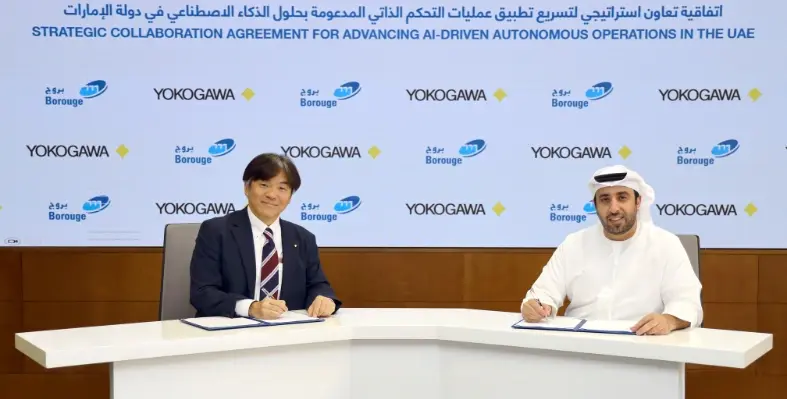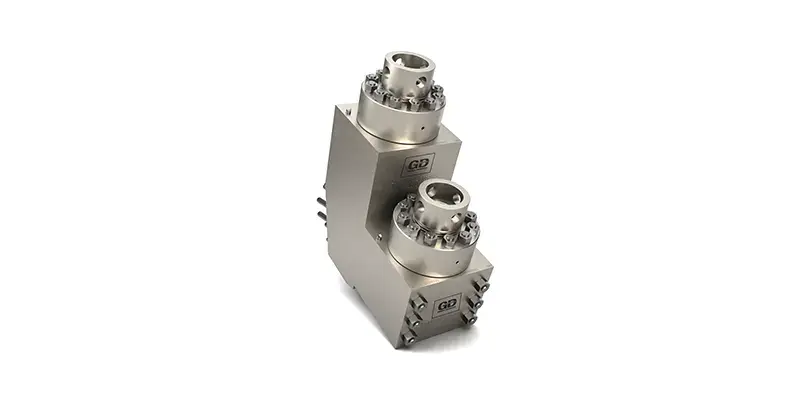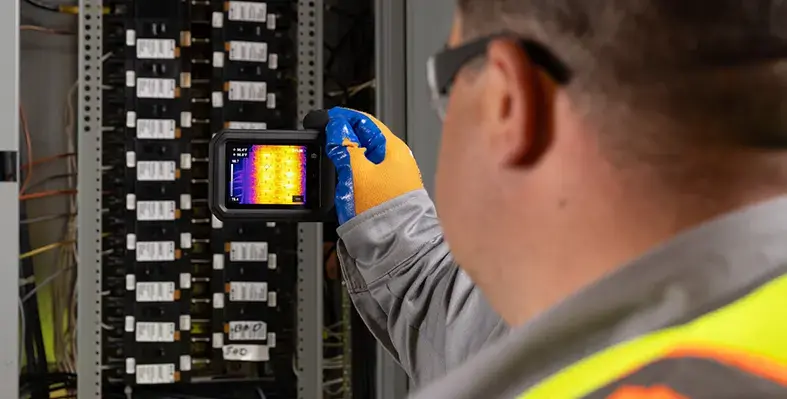
Inspection professionals can quickly detect faults and issues to prevent downtime and extend equipment life. (Image source: Flir)
Flir, a Teledyne Technologies company, has launched the C8 latest-generation thermal imaging camera, providing enhanced image quality, higher accuracy, improved sensitivity, andf advanced reporting templates within Flir Ignite Pro
Traditional thermal inspections can be slow, unclear, and hard to document, relying on manual processes that risk overlooking critical issues, leading to higher maintenance costs, delayed repairs, and reduced productivity. The rugged, easy to use Flir C8 addresses these challenges with powerful, high-resolution thermography, ensuring accurate, efficient, standardised inspections. In addition, technicians can integrate FLIR Ignite Pro cloud connectivity and new advanced reporting templates that streamline workflows and save time as well as supporting easy collaboration.
New capabilities for the Flir C8 include 320 x 240 thermal resolution and 35° horizontal field of view to increase the number of pixels. Used in combination with Flir’s patented MSX® detail enhancement technology, it provides clear and accurate imaging, supporting faster fault and anomaly detection for more accurate diagnostics. For example, in electrical and mechanical maintenance activities Inspection professionals can quickly detect faults and issues in factories, process plants, commercial facilities, and utilities to prevent downtime and extend equipment life.
“Users of our C8 can enjoy up to 40-50% quicker inspections, helping to cut labour and downtime costs,” revealed John Gould, Director – Global Business Development – Condition Monitoring. “Identifying faults faster and acting sooner reduces expensive outages and unplanned repairs, while confidence in consistent, reliable results is assured thanks to high resolution and high thermal sensitivity. Furthermore, isotherm alarms instantly highlight when temperatures cross set limits, helping users quickly identify potential issues”.
The camera also provides increased accuracy of ±2°C @ 0°C to a newly elevated 450°C maximum object temperature, higher sensitivity (NETD <50 mk) and streaming over USB.






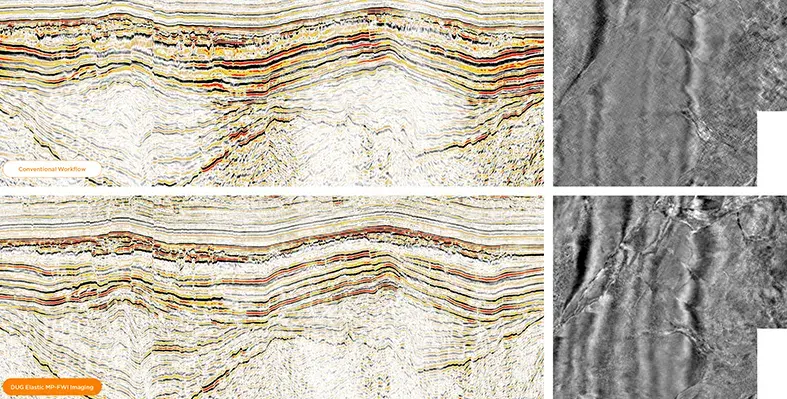
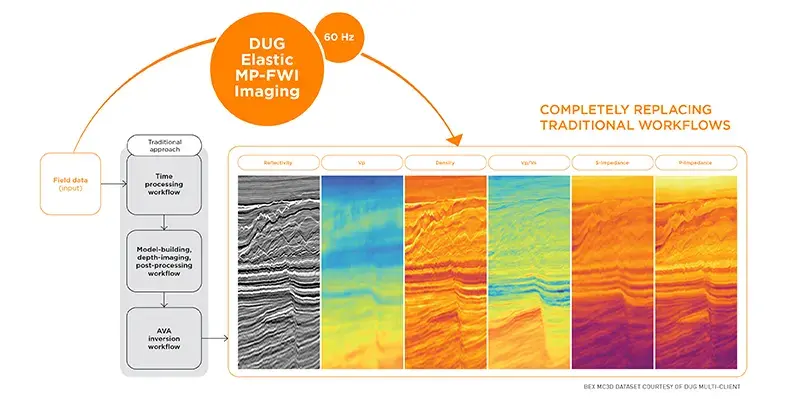 Significantly better illumination and event continuity is obvious when comparing the sections in the figure, thanks to DUG Elastic MP-FWI Imaging of the full wavefield — that includes interbed multiples. Incredible near-surface detail has been resolved, as can be seen on the shallow depth-slices to the right. Subtle structural and stratigraphic features that were simply not imaged with a conventional processing and imaging workflow have now been resolved.
Significantly better illumination and event continuity is obvious when comparing the sections in the figure, thanks to DUG Elastic MP-FWI Imaging of the full wavefield — that includes interbed multiples. Incredible near-surface detail has been resolved, as can be seen on the shallow depth-slices to the right. Subtle structural and stratigraphic features that were simply not imaged with a conventional processing and imaging workflow have now been resolved.